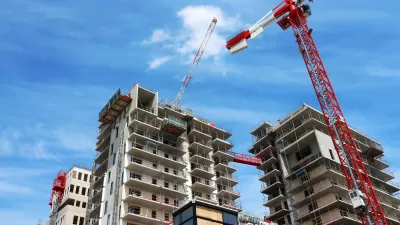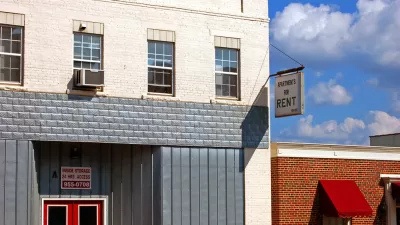Applied to roads, the theory of induced demand says new construction only brings out more users. But can something similar be said of housing? According to this research, the likely answer is no.

Pointing to an upcoming paper studying whether new luxury housing raises rents, Joe Cortright makes a case that induced demand theories for housing may be off-base. "The induced demand theory applied to housing," he writes, "is that building new housing somehow signals a big change in the neighborhood's amenities and livability and the new supply of housing triggers an even bigger increase in demand."
But while induced demand has been shown to apply to highway construction, a key difference between roads and housing is that road users pay a "zero price" to use the amenity. "Thus capacity (and willingness to tolerate delay) are the only things regulating demand, and when capacity is expanded, demand responds quickly," Cortright writes. The case is different for housing, which users pay a premium for. "When you actually price new capacity at even a fraction of its cost, demand evaporates."
Cortright discusses the paper's findings, which show depressed rents in buildings immediately surrounding new construction, drawing on data from 100 apartment buildings in 11 cities. The results appear to support the supply side theory and cast doubt on induced demand.
FULL STORY: Another housing myth debunked: Neighborhood price effects of new apartments

Alabama: Trump Terminates Settlements for Black Communities Harmed By Raw Sewage
Trump deemed the landmark civil rights agreement “illegal DEI and environmental justice policy.”

Planetizen Federal Action Tracker
A weekly monitor of how Trump’s orders and actions are impacting planners and planning in America.

Why Should We Subsidize Public Transportation?
Many public transit agencies face financial stress due to rising costs, declining fare revenue, and declining subsidies. Transit advocates must provide a strong business case for increasing public transit funding.

Understanding Road Diets
An explainer from Momentum highlights the advantages of reducing vehicle lanes in favor of more bike, transit, and pedestrian infrastructure.

New California Law Regulates Warehouse Pollution
A new law tightens building and emissions regulations for large distribution warehouses to mitigate air pollution and traffic in surrounding communities.

Phoenix Announces Opening Date for Light Rail Extension
The South Central extension will connect South Phoenix to downtown and other major hubs starting on June 7.
Urban Design for Planners 1: Software Tools
This six-course series explores essential urban design concepts using open source software and equips planners with the tools they need to participate fully in the urban design process.
Planning for Universal Design
Learn the tools for implementing Universal Design in planning regulations.
Caltrans
Smith Gee Studio
Institute for Housing and Urban Development Studies (IHS)
City of Grandview
Harvard GSD Executive Education
Toledo-Lucas County Plan Commissions
Salt Lake City
NYU Wagner Graduate School of Public Service





























